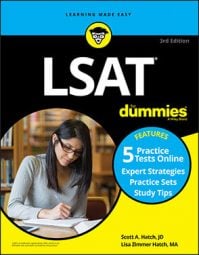Occasionally, a logic game question lists five numerical answer choices. That list is your clue that you may be dealing with a question that asks for the maximum or minimum number of ways a particular logic game event could occur. Often this question type includes maximum or minimum in the question’s phrasing. However, almost every question with a list of numbers for answer choices that doesn’t ask for the minimum or number of events is asking for the maximum number, regardless of whether it actually contains the maximum specification. So possible phrasings for maximum number questions are these:
If Clara joins the glee club, what is the maximum number of students who can join the chess club?
If Reginald bats first, then exactly how many ballplayers are there, any one of which could bat second?
The less common minimum question may look like this:
What is the minimum number of ballplayers who could bat second in any given inning?
If Manny belongs to the red group, what is the minimum number of campers, any one of whom could belong to the blue group?
The subsequent answer choices reveal a list of number values like these:
A. 0
B. 1
C. 2
D. 3
E. 4
The best approach to these questions is to start with the answer choices. If the question asks for the maximum number, as does the prior glee club question, first scan the game board you’ve created to manage a particular game’s information and conditions. You may have worked out some possible combinations that reveal two chess club students when Clara is a glee club member, so you know that neither Choice (A) nor Choice (B) is correct. The answer is at least Choice (C). Don’t assume that Choice (C) is the right answer, though. Consider the possibility of the greatest number first. Apply the rules to see whether four chess club members are possible when Clara sings. If four are possible, then Choice (E) is your answer. If not, you’ll have to see whether three chess club members can meet when Clara joins the glee club. If three works, pick Choice (D). If it doesn’t, stick with Choice (C).
Follow the same steps for questions that ask for a minimum number, but start with the smallest possible number in the answer choices. So to figure out the minimum number of blue group campers for the prior question, you’d scan your game board for clues. If your board shows one blue group camper when Manny’s in red, eliminate Choice (A) and see whether all the rules are satisfied. If so, pick Choice (B); if not, consider Choice (C).
Eliminating answers from greatest to lowest for maximum number questions and from lowest to greatest for minimum number questions saves you precious time on this question type, leaving more time for you to spend on other questions in the set.

